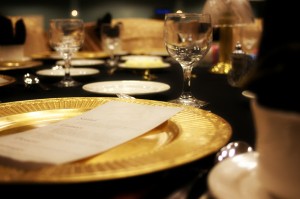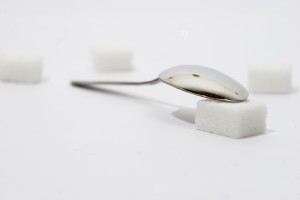 To be completely honest, I felt out of place. I recently attended an etiquette lunch that my college invited me to. I like to think that I know enough about etiquette in formal settings to prevent breaching significant social faux pas, so I accepted the invitation based on my love of free food, which made me feel slightly sleazy and confused about my life decisions. Thank goodness that fellow blogger Linh was there too!
Of course, with any blog post of mine that starts with a sense of being out of place, I generally find significant learning opportunities in the experience. This post is no different! So here are three things that I learned that may help you navigate the world of formal dinners and receptions.
To be completely honest, I felt out of place. I recently attended an etiquette lunch that my college invited me to. I like to think that I know enough about etiquette in formal settings to prevent breaching significant social faux pas, so I accepted the invitation based on my love of free food, which made me feel slightly sleazy and confused about my life decisions. Thank goodness that fellow blogger Linh was there too!
Of course, with any blog post of mine that starts with a sense of being out of place, I generally find significant learning opportunities in the experience. This post is no different! So here are three things that I learned that may help you navigate the world of formal dinners and receptions.
Know the difference between Continental style and American style, and know who you are dining with and the style that they use.
I grew up dining American style. Very likely if you were born and grew up in Canada, you probably have been exposed to the American way of dining. The best way to think about the difference is that the American style adds an extra step: switching your fork from your left hand to your right. Continental style keeps your fork in your left hand at all time. So the process is slightly smoother in that every bite of food does not require you to rest your knife on the plate (blade facing in, never out), switch your fork to the right hand, and then take a bite (tines up). Instead, when dining Continental style, you maintain hold of your utensils at all times, taking a bite of your food with the fork in your left hand (tines down). Knowing who you are eating with, and how they dine can leave a lasting, positive impression.Eat your soup from the top down, and always away from you.
Eating soup is a tricky thing when it comes to formal dinners, especially formal dinners with potential employers. It’s never good form to slurp, dribble, or blow on your soup to cool it down. To get around these potential embarrassing moments, remember that the surface of your soup is the coolest, and therefore is your friend. With this in mind, you can confidently skim your spoon along the surface of the soup (do not dunk your spoon) away from you and use the back of the bowl to stop drips before they reach your chin and/or your white shirt. This will allow you to eat your soup without slurping and help you maintain the grace of a gazelle, at sunrise, hydrating majestically at a glorious watering hole.Don’t be deceived, your coffee spoon is meant to do two jobs.
Perhaps the most shocking thing that I learned is that the coffee spoon isn’t merely “just a coffee spoon.” This has changed my post-main-course approach. It would seem that the dessert fork and the coffee spoon are partners in crime. On top of functioning as a coffee spoon, the coffee spoon is also used to eat dessert! But what of the dessert fork you may ask? Is it merely just a decorative item meant to enhance the visual aesthetic of your place setting? Not exactly. The dessert fork has an important function too. It anchors the dessert to your plate. For cakes, pies, and other easy to eat desserts, this may not seem like much of a game changer; but for desserts like poached pears, that have a high potential of flying off of your plate, across the room, and landing unexpectedly in some poor lady’s (or gentleman’s) well coiffed bouffant, the dessert fork’s function becomes a definite advantage! This post has been quite light-hearted, but that isn’t to say that etiquette is not vitally important. Beyond U of T, its advantages become clear. We tend to associate “snooty” images with etiquette, but this ignores its main function: making social interactions easier. Knowing what to do in social situations liberates us to confidently focus on standing out during important functions. Hopefully these tips can help you shine and perhaps help you snag your dream job.


0 comments on “Lessons in Etiquette”